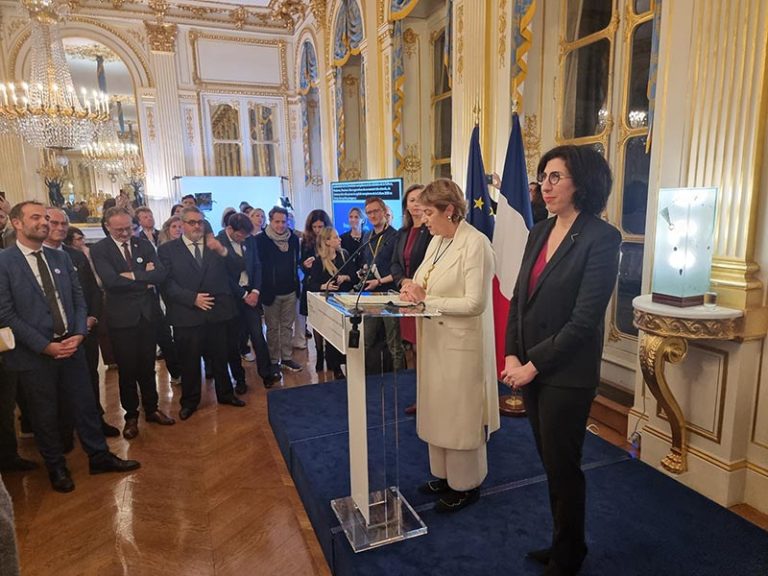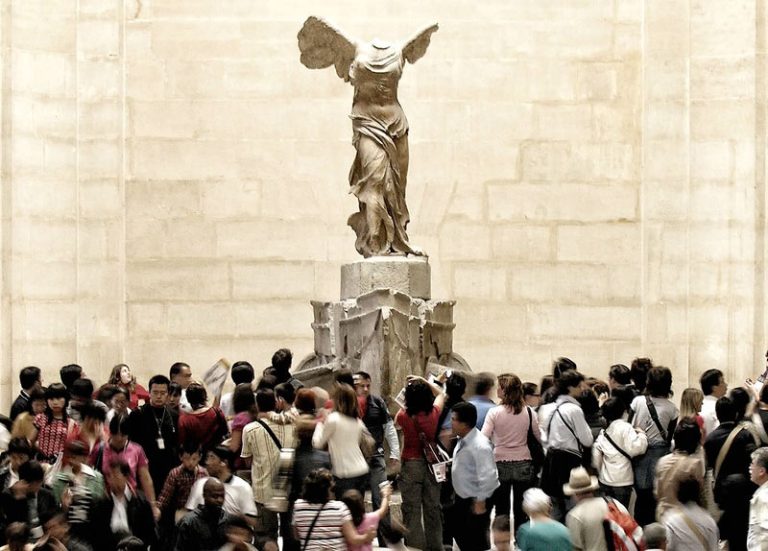For eight years, he searched and cross-referenced archives and documents in Belgium, France, the Netherlands and Germany to try to retrace the journey of paintings taken from their legitimate owners, noting that, in many cases, these works were not returned where they should have been.
Belgium occupies a particular position in the transit of works stolen by the Nazis during the Occupation. Can you explain why?
In most occupied countries, paintings seized by the Nazis were sent directly to Germany. Whereas in Belgium, many paintings first passed through the Netherlands or France. After the war, it was decided to return the paintings to the country from which they were sent to Germany, which blurred the lines. During the war many Germans, who loved classical art, came to buy in Belgium and they had significant resources. There were also intermediaries who came to buy to supply the collection of Hermann Göring or that of the Hitler Museum in Linz.
Can you specify the export circuit from Belgium?
Many important collections were transferred to the Jeu de Paume which was then the central repository for all looted art in France, but also in Belgium. At this time, Belgium and northern France formed a common administrative entity for the Nazis. Göring, who was also Minister of Transport, often came to Paris to the Jeu de Paume where exhibitions were set up for him, when we received an interesting collection. He just had to help himself. After the war, it was seen that of the 1,400 pieces in the Göring collection, half had been stolen.
Was the art market flourishing during the war?
This is what emerges from the archives of the Palais des beaux-arts in Brussels which housed the largest auction house at the time and from a large number of catalogs that I was able to consult to constitute with Kim Oosterlinck, a database of several thousand tables. This professor at the Free University of Brussels, who worked on the art market during the war, also studied the activities of Drouot in France and those of auction houses in the Netherlands. He was able to see that in 1940, in all these countries, the market was stable, then it increased until 1942 when it reached its peak. By 1943, all the beautiful pieces had been sold and it fell back. This price surge can have several explanations. In times of war, stock markets are very volatile and people seek, as we see today, to invest in assets that appear safe, such as art. The Nazis had a real thirst for classical art and Flemish primitives that enhanced their Germanness, and they had plenty of money to spend. Furthermore, during the war, there were always people who enriched themselves through somewhat shady dealings and who sought to launder the accumulated money.
Geert Sels, The Nazi war chest2023.
© Racine editions
How can we explain Belgium’s indifference and non-action?
This is a question that comes up all the time and it’s very difficult for me to answer it. All I can say is that it is a question of political choices. On three occasions, Belgium missed a date with history. The first moment was immediately after the war. In Belgium, the recovery of works of art has been very low for several reasons. Firstly because we were above all interested in the recovery of goods which had more economic value, such as trains or boats. Then, we are in Belgium and there were two similar services trying to compete with each other. Finally, in the artistic recovery cell, the few people specialized in art were very talented people, but very young, who did not have the authority to go to the collection centers in Germany, bang their fists on the table and say: “That comes from Belgium. »
The second occasion was in 1998, when the Washington Principles which were signed by 44 countries, including Belgium, committing to carry out research and publish the results, either through publications, books, or in a database. Belgium quickly followed by creating the Buysse commission, but the art section included there had too little time to carry out in-depth work. She delivered a report which was not finalized and which only showed the tip of the iceberg. It is therefore at the moment when Belgium completes this work that the other countries present the fruits of their research.
The third moment was in 2013 with the discovery of the Gurlitt collection in Germany with its 1,500 stolen pieces of art. In Germany, it was a real scandal. The Netherlands, France and Germany decided to strengthen and deepen their research on the works acquired in an extended period, between 1933 and 1945. This was the third possibility for Belgium to engage in the process. But she didn’t follow. It was at that moment that I began my investigations and that I thought that Belgium should set up a restitution commission, study the provenances which are not complete, and publish all of this in databases. data. After the publication of my book, there were announcements and declarations of intent from politicians, but things took a long time to materialize.
You also draw attention to a large number of paintings which are today in France and for which we can put forward the hypothesis of a Belgian origin…
I based my deductions by cross-checking three archival funds with the Rose-Valland database. In the Koblenz archives, I found a list of paintings stolen during the German Occupation. Among these, there are 31 paintings transferred from Belgium to France. I found 7 matches with the Rose-Valland database and they are still in France [voir tableau ci-dessous].

© The Arts Journal
There is a second list of works taken from the Belgian archives in Brussels. They were recovered in Germany, but we do not know by whom, the French, the English or the Belgians. Once again, they may have a Belgian origin. I still find concordances with the Rose-Valland site, for a Fragonard, which is at the Louvre, as well as a Jan Olis and a Jean-Baptiste Perronneau. They are all on the National Museums Recovery (MNR) list, which identifies works as looted property. If we take this avenue seriously, I think that France should launch research into these paintings and, for its part, Belgium should try to prove their Belgian origin.
There is still a third archive fund: the list established by the Monuments Men Belgians. These are the paintings allegedly sold by Belgian art dealers, but declared missing after the war. By cross-referencing this list with the Rose-Valland site, I found four more paintings which are said to have left Belgium and which I found in France.
Is there a painting in particular that catches your eye?
I discovered in the archives of the Cognac Museum a painting which belonged to the Jewish art dealer Léon Seyffers. This is theAllegory on vanity and repentance by Cornelisz van Haarlem which was purchased by the Strasbourg Museum. As the border changed several times during this time, France said that this painting was not paid for with Nazi money and therefore could be considered French. He did not receive the MNR label, but he comes from Belgium, he should be an MNR and he should have returned to Belgium after the war. I communicated this information to the beneficiaries of Seyffers’ family; it’s up to them to claim it.







